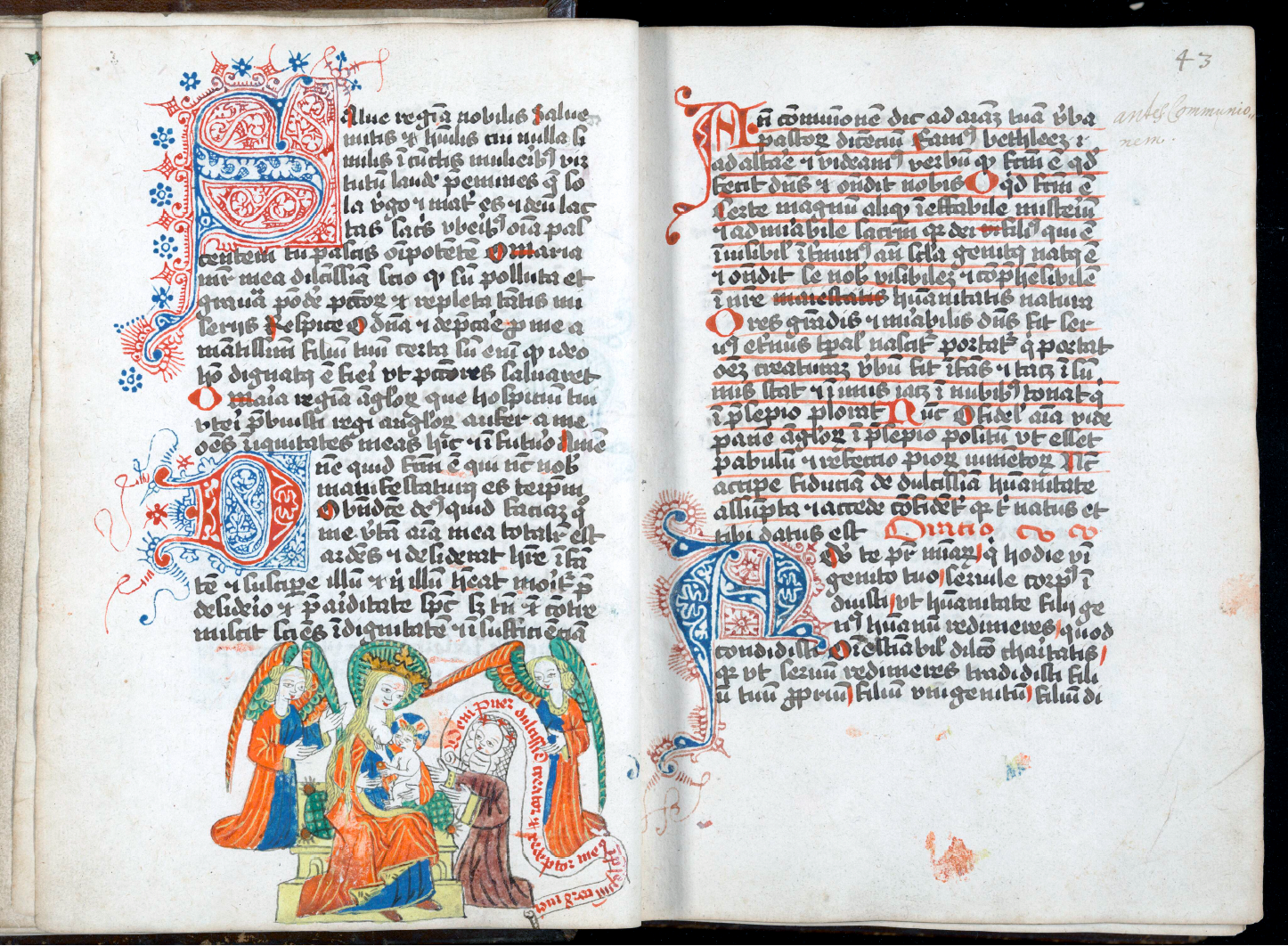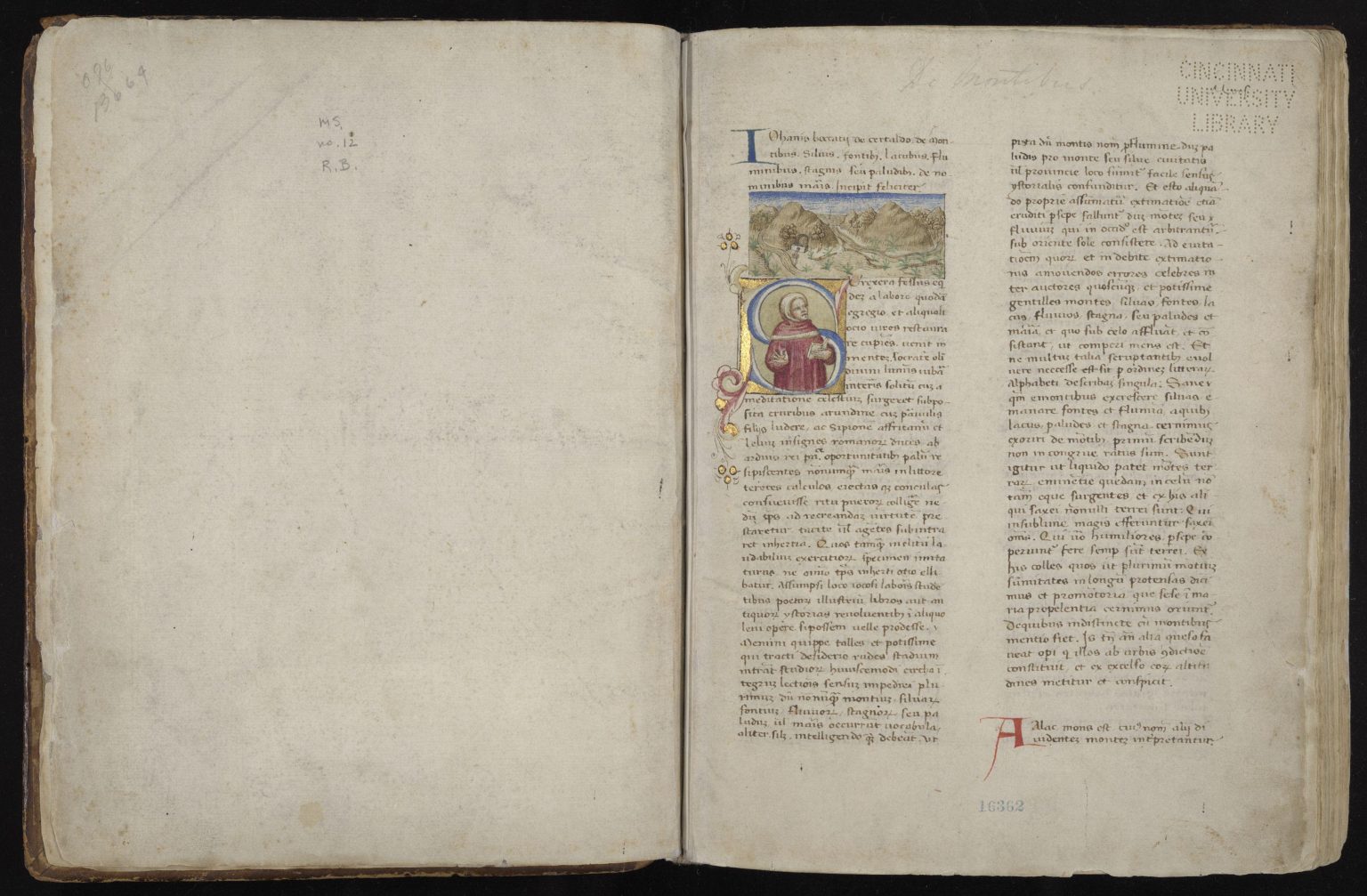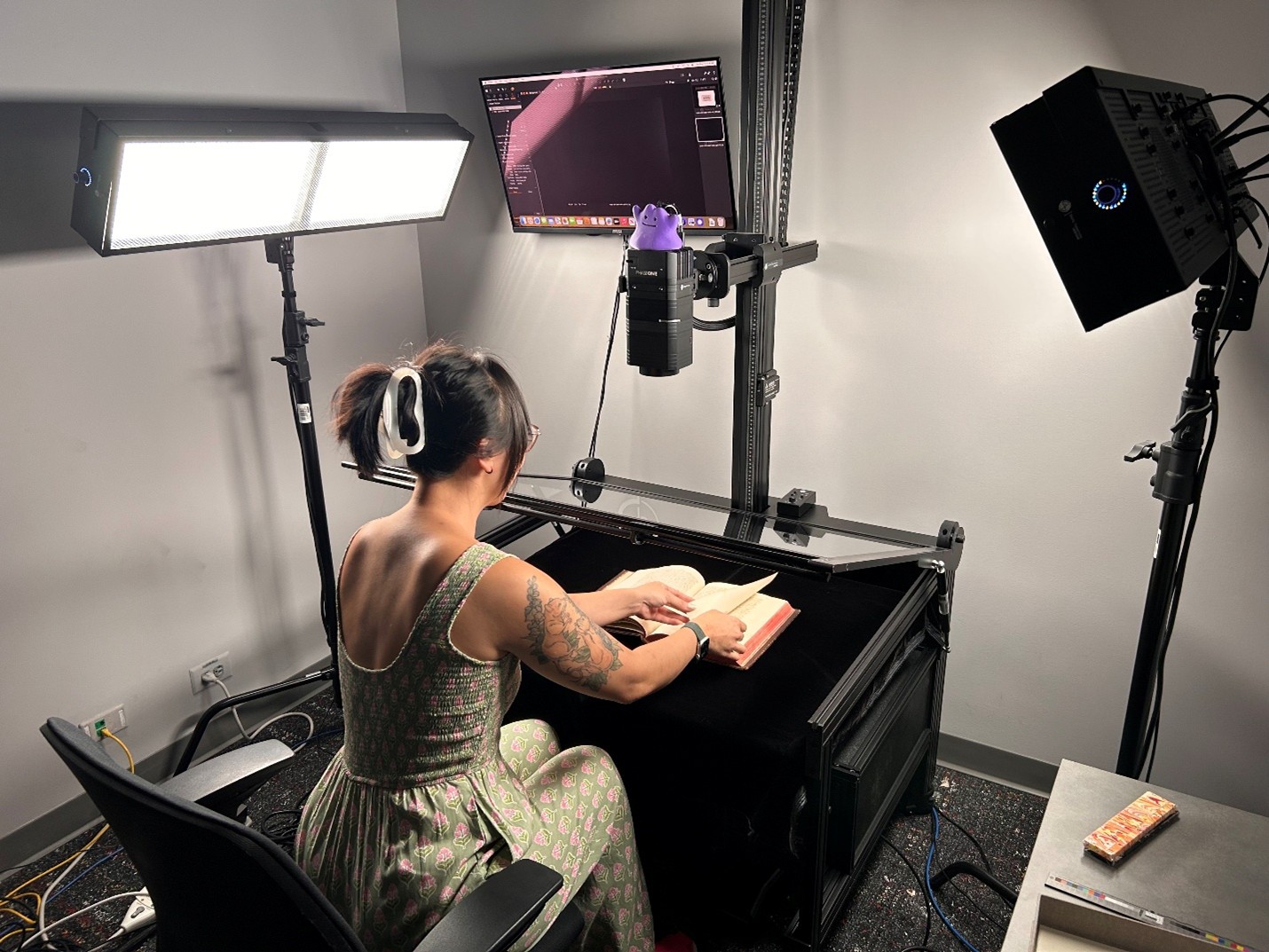Collaboration brings increased digital access to rare manuscripts
By Sidney Gao, Interim Head of Digital Initiatives, and Chris Harter, University Archivist and Head of the Archives and Rare Books Library
In the late 15th or early 16th century a nun sat at a desk in the Neukloster bei Buxtehude convent in Lower Saxony carefully adding the final decorative touches to a handwritten prayer book complete with rubicated initials and figural illustrations. One of those illustrations portrays a nun gazing at Mary and the infant Jesus in what may be a bit of self-portraiture by the nun. The book, known today as Meditationes et Orationes with the shelfmark Ms. 2, is comprised of 341 leaves written in a clear and careful hand in brownish-black ink and highlighted in reds, blues and greens throughout.

This description of Ms. 2, as well as new information on when and where the manuscript was created, is provided thanks to the work of scholars from Germany, Great Britain and the United States who were provided digital access to Ms. 2 thanks to collaborations between the University of Cincinnati Libraries’ Archives and Rare Books Library (ARB) and Digital Initiatives Team (DIT).
The Buxtehude manuscript is one of a handful of medieval manuscripts held at ARB that are currently being digitized by DIT staff. Acquired through donation and purchases for many decades, ARB’s manuscripts range from 14th century Italian manuscripts to a late 15th century illuminated book of hours. A 1440 copy of Giovanni Boccaccio’s geographical dictionary of antiquity, De Montibus, Silvis, Fontibus…; an early 15th century German translation of Jacobus de Voragine’s Legenda Aurea (The Golden Legend); and a mid- to late-15th century Latin gradual, or choir book, are some of the highlights of the collection.

The Digital Initiatives Team has been collaborating with ARB for years to digitize manuscripts, as well as archival and special collections. The two teams work together in a collaborative effort to preserve the rare and unique holdings of ARB. This process begins with collating descriptive information about the manuscript or collection, and ends with publishing the collection online for research, teaching, and learning here at UC and the broader world community. Members of both teams work diligently to assess items for digitization, and ensure that a complete inventory is made before any imaging begins. The collaboration between the two teams has been extremely beneficial in not only creating wonderful and growing digital collections from ARB’s holdings, but also in strengthening the relationship between the teams. This creates a creative and safe space for collaborators to interact with every step in creating an impactful digital collection.

In between the documentation-loaded beginning and end of the workflow is the fascinating work of digitizing the items themselves. The Digital Initiatives Team uses the Digital Transitions Versa, IXH 150MP reprographic camera system, and Photon XL lighting to image all items. This system is suited to digitizing manuscripts in good, pliable condition with its state-of-the-art automatic cradle system. This moving part of the copystand gently goes up and down to carefully cushion the front and back covers of the book being digitized. This results in an extremely clear image that is as flat as the binding of the book allows. In addition to imaging, DIT ensures the digital preservation and accessibility of the collections adhere to internal standards and policies. Files are bagged, checksums are run, and each item is assessed for accessibility remediation before ingest to our repository. Finally, after hours of hard work by both ARB and DIT, the collection is made available to the public.
ARB’s manuscripts, as well as other digital collections created by UC Libraries are available via JSTOR.